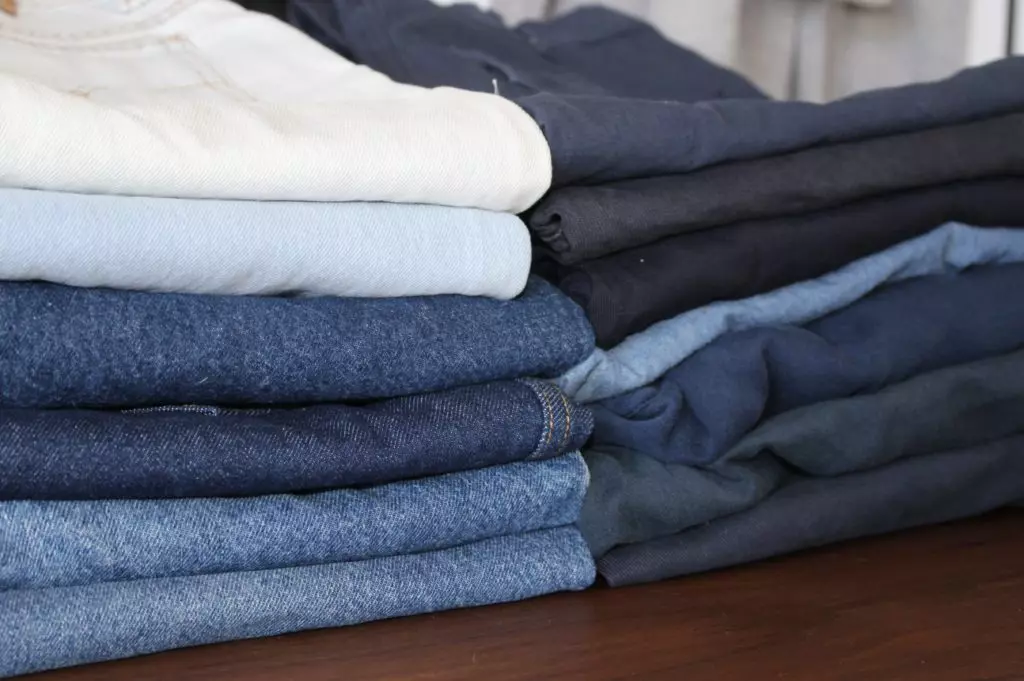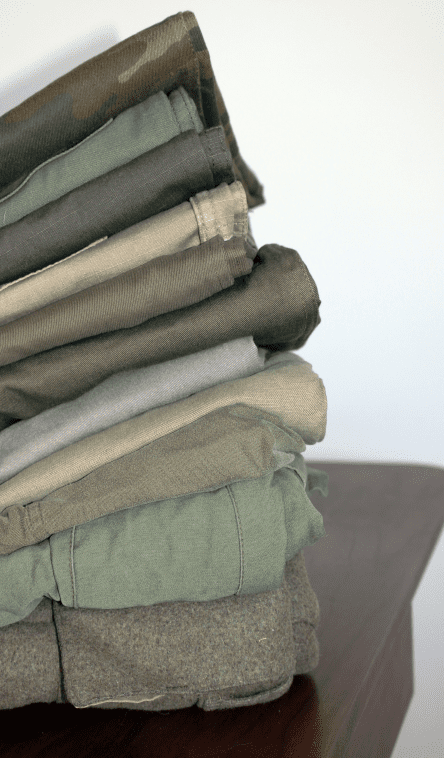There are a lot of great reasons to do a closet audit. Maybe you’ve noticed just how much stuff you have since spending more time at home… I certainly have! A closet audit will not only help you clear out some space, but you will also have some fun learning about your personal style. Plus, you can learn a ton about your purchase decisions based on the clothes you didn’t wear, to hopefully avoid making those same mistakes again. You can even make a little money by selling those clothes to someone who will give them a second life. We love a win-win!
The time spent mulling over your clothes during a closet audit also presents an opportunity to educate yourself about the impact of your consumption habits. Tools like the Dirty Laundry Closet Mass Index, ThredUp’s Fashion Footprint Calculator and Fashion Takes Action’s My Clothes, My World Closet Auditing program gave me lots to think about, and provided me with a window into the environmental and human impacts of my own buying habits.

A closet audit involves going through your whole wardrobe piece by piece and assessing what works for you. You’ll examine each garment and ask yourself questions like “does this fit me properly?”, “was it trendy but now is out of style”, “does it work with the rest of my wardrobe?”, “does it suit my lifestyle/do I have opportunities to wear it regularly?”, and “is it stained or damaged?”. Depending on your answers, you’ll sort your clothes into three piles: Keep, Sell/Donate, and Clean/Mend.

Step 1: Prepare
I started by pulling everything out of my closet and sorting garments by type – i.e. pants, shirts, outerwear, suits/jacket, and sweaters/sweatshirts, etc. I knew I had a lot of clothing but the numbers were still a little jarring. Not including shoes and accessories, I had a whopping 271 articles of clothing in my closet. That’s 45 pairs of pants, 176 shirts, 15 articles of outerwear, 20 suits and jackets, 15 sweaters/sweatshirts. And it’s important to keep in mind that I had already gotten rid of some coats and jackets earlier in the year… otherwise there would have been 2x that amount!
My next step was to sort even further, making subgroups based on common elements like colour or pattern for each garment type so that I could better gauge what coordinates with what, what fits with my personal sense of style, and what types of clothes are over- or under-represented based on my lifestyle needs. For instance, I had a whopping 90 t-shirts despite wearing a collared shirt almost daily, which indicated to me that I definitely had some excess to trim.

Step 2: Assess
Beginning with pants, I went through each article of clothing, trying things on if needed, in order to sort my entire closet into categorized piles. Some items will go in the Keep or Sell/Donate pile right away, while others might take some more consideration. If you’re not sure about a specific piece, try it on. If it doesn’t fit, or if the colour doesn’t look good on you, or if it would look wildly out of place with everything else you own, you can probably get rid of it. And keep in mind, it’s completely fine to make a Maybe pile that you’ll come back to. However, if your Maybe pile begins to dwarf the others, it’s a sign you need to be more selective and decisive.
Step 3: Organize
Once you’ve finished sorting, it’s time to put your Keep pile back in the closet where it belongs. This is also a great opportunity to organize your closet into a system based on how you get dressed every day. I sorted my closet by garment type, then further by colour/pattern, as I did when sorting each piece for this audit. You might organize based on colour family, build a series of smaller capsule wardrobes which rotate based on the season, or organize by aesthetic and level of formality (athleisure, workwear, streetwear, tailored, etc.). Only you know what works best for your needs and lifestyle.

If you’ve never thought about your needs, there’s no time like the present to sit down and articulate what they are. What messages are you trying to send to the people you interact with? Does this differ based on different things in your life? What messages are your clothes currently sending? How should you dress for different roles in order to send the messages you want to?
Step 4: Follow-through
Now it’s time to deal with the other two piles. For your Clean/Mend pile, consider whether you can do the maintenance yourself, and if that’s realistic. If not, take them to a tailor and spend the money if they’re worth it. If they aren’t but are still wearable or are able to be repurposed, add them to your Sell/Donate pile. You can then deal with your Sell/Donate pile either locally or online. Your options include consignment shops, second-hand stores, selling to friends/family, or online retailing sites like Kijiji, Etsy, Depop or Facebook Marketplace (for more info about online thrifting, check out our recent blog post here). It seems counter-intuitive, but you should still donate damaged or stained clothes that you’re unable to sell! There is a lot of recycling value left in items that can’t be sold, and it’s one less thing that ends up in a landfill.

My Audit, By the Numbers
Pants: 45 pairs down to 27 (-40%)
Collared shirts: 86 down to 51 (-41%)
T-shirts: 90 down to 27 (-70%)
Suits & Sport Coats: 20 down to 9 (-55%)
Coats & Jackets: 15 down to 13 (-13%)
Sweaters & sweatshirts: 15 down to 13 (-13%)
All in all, I reduced the number of items in my closet from 271 to 140 – a whopping 48%. That means more space in my house and some money in my pocket, plus some great pieces will now get recirculated into the fashion ecosystem for someone else to discover. It will certainly make me think twice the next time another pair of olive pants catches my eye.

